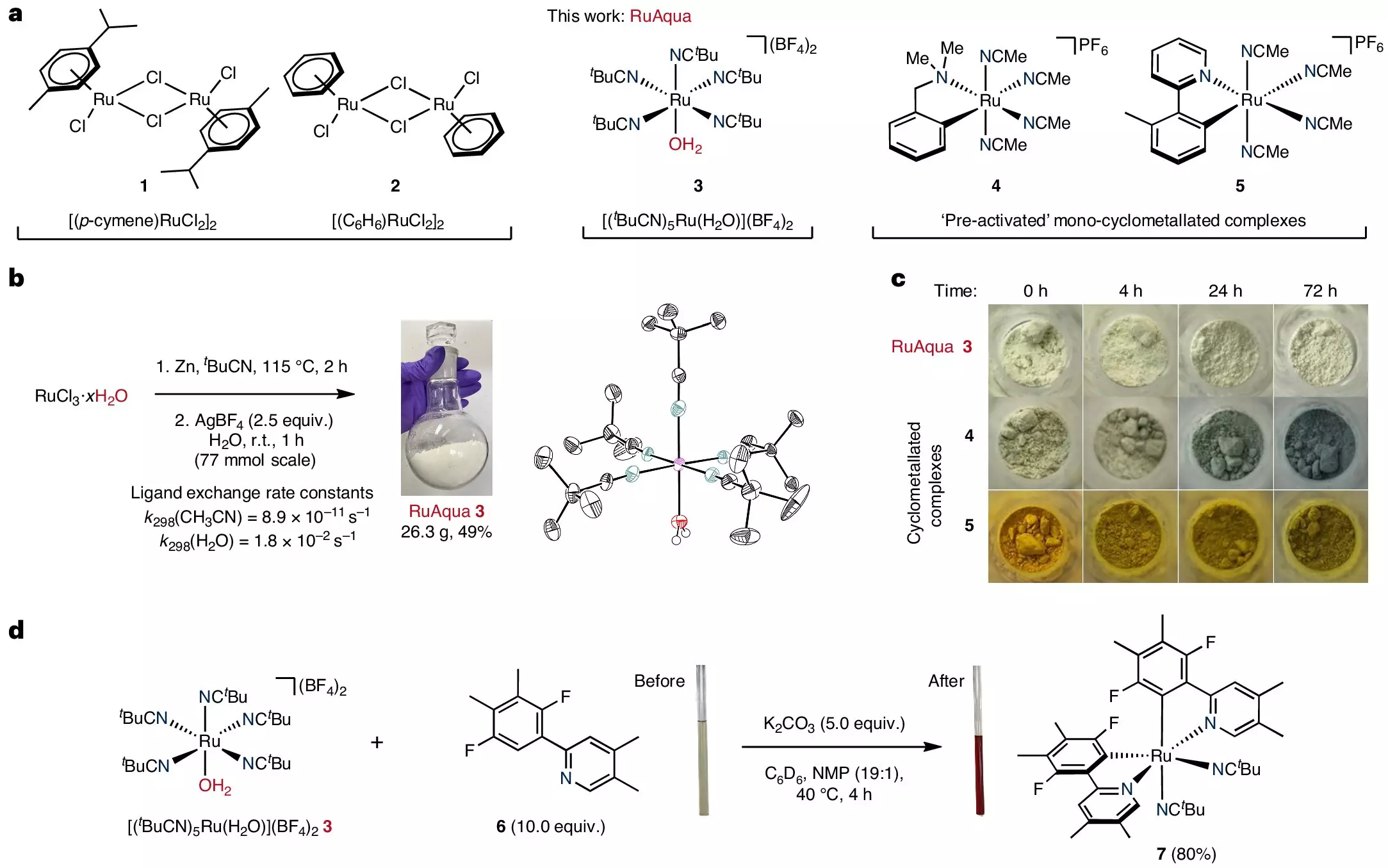The University of Manchester researchers have recently unveiled a groundbreaking discovery in the world of catalysis. Traditionally, catalysts have been pivotal in expediting chemical reactions and are crucial in the production of various manufactured goods. However, one particular catalyst, ruthenium, has faced limitations due to its reactivity to air. This constraint has impeded its widespread adoption across industries, requiring specialized handling procedures and equipment. Nevertheless, the innovative work by the team at The University of Manchester has resulted in the creation of a ruthenium catalyst that defies these challenges, opening up a world of possibilities for enhanced efficiency and innovation.
The new ruthenium catalyst developed by the researchers has exhibited remarkable stability in air, a quality previously deemed unachievable in highly reactive catalysts. This breakthrough not only eliminates the necessity for specialized equipment but also allows for simultaneous reactions, streamlining optimization processes in chemistry. As lead author Gillian McArthur expressed, this catalyst offers unparalleled reactivity while maintaining stability, making it a valuable tool for both experts and non-specialists in the field. Moreover, the catalyst’s versatility has been demonstrated in a wide range of chemical transformations, showcasing its potential for various applications across industries.
Industrial Implications and Collaborative Efforts
Collaborating with global biopharmaceutical company AstraZeneca, the researchers have demonstrated the commercial viability of the new ruthenium catalyst. AstraZeneca’s Director of High-Throughput Experimentation, Dr. James Douglas, emphasized the critical role of catalysis in advancing sustainable drug discovery and manufacturing processes. The accessibility and effectiveness of the catalyst have sparked interest in its industrial applications, promising to revolutionize the development of medicines in a more environmentally friendly manner. The collaborative efforts between academia and industry signal a shift towards cutting-edge technologies that can drive innovation and efficiency in various sectors.
The introduction of the innovative ruthenium catalyst has already led to the discovery of novel reactions previously unattainable with traditional catalysts. With its enhanced versatility and user-friendly implementation, researchers anticipate further advancements and innovations in the field of catalysis. The catalyst’s potential to facilitate rapid screening and optimization procedures hints at a future where chemical processes are not only more efficient but also environmentally sustainable. As industries strive towards greener practices and enhanced productivity, the revolutionary ruthenium catalyst stands as a beacon of hope for transformative advancements in chemistry and beyond.


Leave a Reply